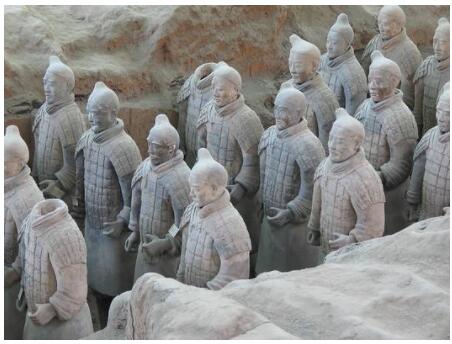The old emperors
For thousands of years, China was ruled by various imperial dynasties, some of whose reigns stretched over several hundred years. Despite the long continuity of imperial rule, China has been unified in 221 BC. by no means a consistently stable state. Time and again the decline of dynasties led to territorial fragmentation, which was replaced by renewed military unification under a new dynasty.
In the Qin Dynasty (221 BC – 207 BC) China was united under the first emperor Qin Shihuangdi. During the Han Dynasty (206 BC – 220 AD), Confucianism was elevated to the status of a state philosophy. Under the Tang (618-907), China flourished in culture and Buddhism. The Song Dynasty (960-1279) is known for many technical innovations. At that time, for example, book printing was developed and paper money and gunpowder were invented. The Yuan Dynasty (1279-1368) was a Mongolian rule, which, however, left the existing state structures intact. The Ming Dynasty (1368-1644)caused a new flowering of culture (e.g. novels, porcelain art) and was replaced in 1644 by the Qing dynasty, a Manchurian rule.
Relics of the old days can be found in many places in China, such as the impressive Imperial Palace in the capital Beijing or the terracotta army that watches over the tomb of the first emperor of China in Xi’an. Museums all over the world are full of classic Chinese landscape painting, bronze and clay vessels, jade jewelry, and calligraphies from all centuries. But the current political and social life in the PRC has hardly anything to do with the imperial era. Rather, today’s China emerged from the painful struggle of traditional China with modernity.
Fall of the last dynasty
The final decline of the imperial rule began in the middle of the 19th century, when the Qing dynasty was shaken by clashes with foreign powers and civil unrest alike.
The first opium war in 1839 marked the beginning of a phase of military conflicts with technically advanced foreign powers, all of which resulted in defeats for the emperor. Western industrial nations such as England, France, Russia and Germany were mainly involved in the armed conflicts.
As a result of the many lost wars, China had to open its territory to the foreign powers for free trade, provide trade bases such as Shanghai, grant extraterritoriality and most-favored nation treatment. These privileges, recorded in so-called “unequal contracts”, not only weakened the empire economically and militarily, but also led to a severe loss of reputation for the emperor among the Chinese people.
The new weakness of the imperial government, combined with a precarious economic situation, led to various popular uprisings in large parts of the population. The most famous of these was the Taiping Uprising of 1851-1864, one of the largest civil wars in Chinese history, which could only be put down with great difficulty and with the support of foreign troops.
The central problem of the Qing government was the internal division of the court between conservatives and reform supporters. Proponents of reform called for the adoption of western technology and pragmatic cooperation with the foreign powers based in China. The conservative circles around the Dowager Empress Cixi, who de facto ruled China at the end of the century, still viewed the Chinese emperor as a secular and spiritual hegemon. They saw in the intrusion of foreign powers only the humiliation. They did not rely on cooperation, but rather on confrontation as often as possible and plunged China into ever new, costly wars.
According to aristmarketing, China lost its influence over Indochina in the Sino-French War in 1885. After the Boxer Rebellion was put down in 1901, China was forced to establish embassies in Beijing and allow foreign troops to be stationed on its territory. Most painful for the emperors and the Chinese people was the defeat against Japan in 1895. As a result, China not only lost its supremacy in East Asia, but also had to cede Taiwan as a colony to Japan. A little later, Japan rose to become the most powerful military power in all of East Asia with its victory against Russia in 1905.
In the last years of her reign, the Dowager Empress Cixi finally switched to a reform course. A new school system, a reformed military and popular assemblies at national and local levels were hastily established. These belated reforms could no longer stop the internal decline of the dynasty.
The last emperor was finally brought down by Sun Yat-sen and Yuan Shikai. Sun Yat-sen was an internationally popular and well-connected activist who wanted to unite the nation of China under the umbrella of a republic. After some unsuccessful attempts at uprising, financed by him, failed, Sun Yat-sen had to go into exile in Japan. There he gathered many critical Chinese intellectuals under the umbrella of a revolutionary, national movement which was to provide the political ideas for a new state. However, their revolution could only be successful because Yuan Shikai, China’s most powerful military man, sided with the revolutionaries.
When supporters of the revolutionary movement started an armed uprising in Wuhan in October 1911, Yuan Shikai refused to give the emperor his military assistance. After the revolutionary uprisings spread across China, Yuan Shikai and Sun Yat-sen finally forced the last emperor to abdicate. From January 1, 1912, China became a Republic and Sun Yat-sen became its first, albeit provisional, president.
